Grow Heather In Pots – It Allows You To Better Control The Acidity And Moisture Levels

HEATHERS > CONTAINERS
Reviewed By COLIN SKELLY

Colin is a Horticulturist and Horticultural Consultant with experience in a range of practical and managerial roles across heritage, commercial and public horticulture. He holds the Royal Horticultural Society’s Master of Horticulture award and has a particular interest in horticultural ecology and naturalistic planting for habitat and climate resilience.
Contributions From IRENE LANG

The owner of Perthshire Heathers, Irene runs her specialist heather nursery from North Fife in Scotland. Irene has an RHS Level 2 Certificate in Horticulture at RBGE and also achieved a HNC in Horticulture at SRUC Elmwood. Her nursery is endorsed by the RHS and has close affiliations with Heather World.
IN THIS GUIDE
HEATHER GUIDES
Container Growing
Pruning
Rejuvenation
Tree Heather
Ubiquitous in the Scottish Highlands, heather is a hardy, drought-tolerant plant that is native to northern Europe but has since been introduced to many other parts of the globe.
Because of its durable nature, heather can be easily grown and maintained in pots, containers or the ground.
Indeed, the simplicity of its cultivation makes it an ideal plant for novice gardeners.
As long as you get the pH balance of your soil right, keep it well hydrated and protect it from the worst ravages of winter, your heather plant will do just fine.
Is Heather Suited To Pots?
It might be a more common sight on the glens and bens of Scotland, but heather can be quite easily grown in containers.

In fact, doing so can be advantageous, since it allows you to better control the acidity and moisture levels in the soil, as well as move the plant around your garden (or even indoors) at will.
“Please do not think that heathers and heaths are for heather beds only,” says Irene Lang from Perthshire Heathers.
“Heathers in containers look lovely and I especially like growing the winter/spring flowering varieties in large containers for a burst of spring colour.”
Choosing Containers For Heather
Generally speaking, heather isn’t a plant that dominates its surroundings, only ever reaching a maximum of 30cm in height, but frequently less than half that.
Its roots are similarly shallow, so they don’t need exceptionally deep or large pots.
Having said that, I find heather is often at its most attractive when positioned alongside other blossoming plants from the same Ericaceae family, such as rhododendrons and azaleas.

As such, you may want to choose a container big enough to fit all of the plants you intend to place within it.
In any case, you should ensure that the pot has adequate drainage holes in the bottom, since heather can’t stand waterlogged soil.
Also, if replanting, make sure the pot is one size larger than the one in which it was previously housed to allow it the space to develop healthily.
Compost For Heather
Heather is a little fussy about the type of compost in which it is grown, but the good news is that planting it in a pot gives you far greater control over this aspect.
“Soil type is very important and although the Erica x darleyensis and Erica carnea varieties will tolerate most soils, E. calluna varieties require an acidic soil,” warns Irene.
“Check the pH level first and add ericaceous compost when planting where necessary.”
Ideally, you’ll pot it in ericaceous soil that retains moisture well but still has good drainage, with a pH level anywhere between 4.5 and 5.5.
Indeed, this predilection for acidity is the most demanding aspect of heather’s requirements, so you’ll want to make sure the levels do not drop over time and certainly do not add any lime to the soil.
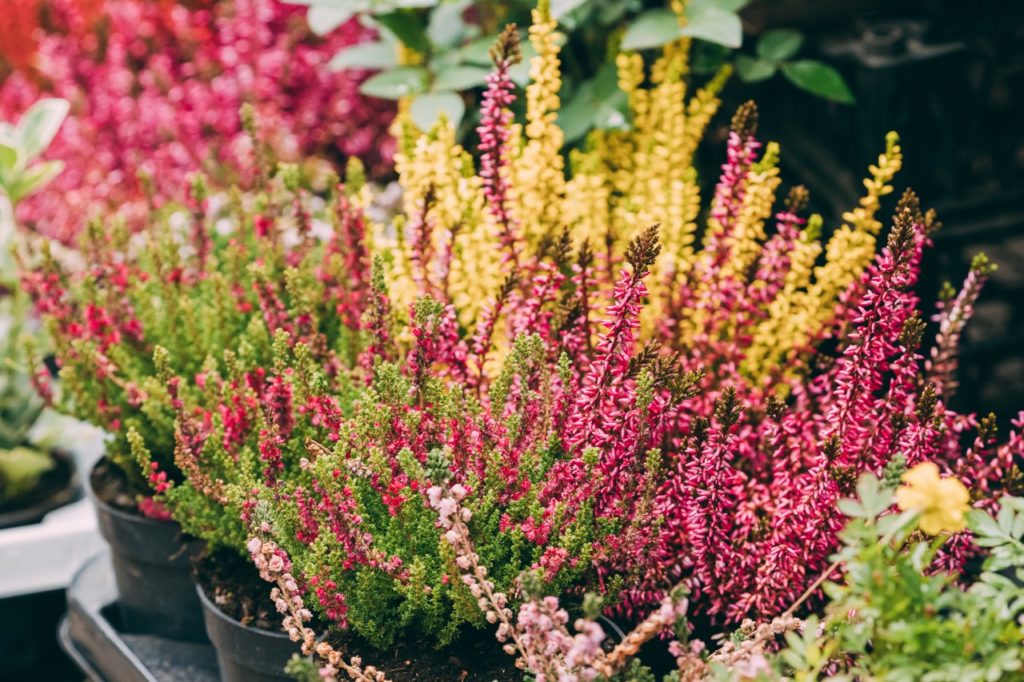
Any product marketed for growing ericaceous plants should do the trick.
On the other hand, if you’d like to create your own potting mixture, you can do so by combining 50% compost, 20% perlite, 10% leaves (or some other mulch), 10% sand and 10% garden soil.
This will create the perfect pH, moisture retention and drainage qualities to serve your heather well.
Potting Up Heathers
Before you do anything, it’s a good idea to select the location in which you’ll position your potted heather plants.
This is especially true if you plan to use heavy concrete or terracotta pots filled with many different plants and a shedload of soil.
With that in mind, choose a location that enjoys plenty of sunshine but has decent protection from the wind.
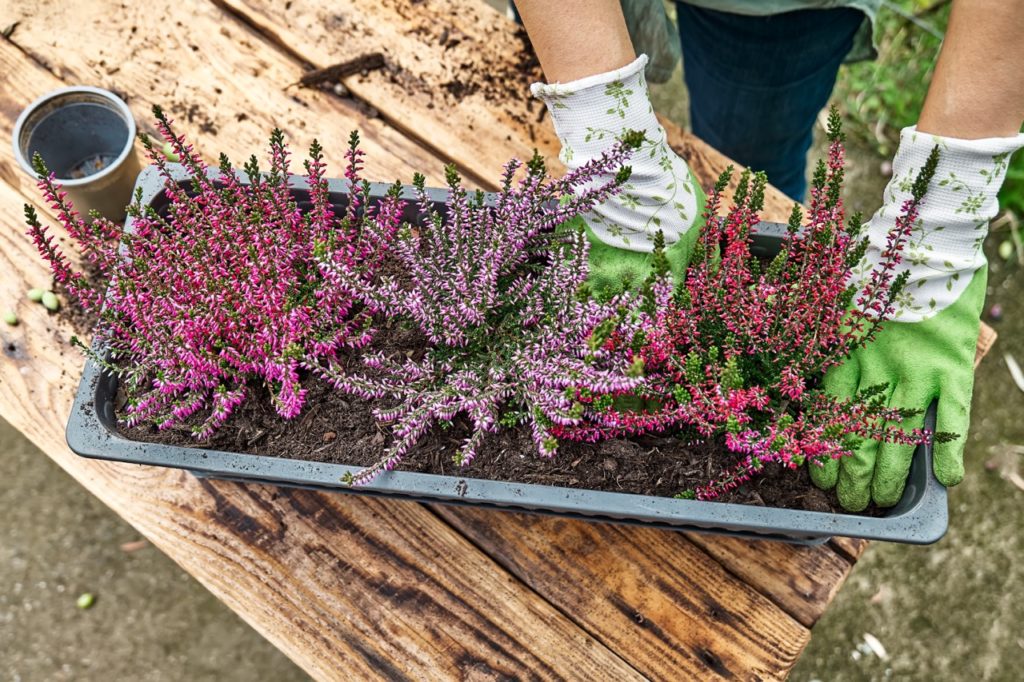
Heather will perform best when it’s exposed to at least eight hours of sunlight per day, and though it can survive in windy locations, it will appreciate some shelter.
Fill your container with your potting mixture to around two-thirds of the height of the pot.
Place the heather in it, positioning larger specimens towards the rear of the container and smaller ones at the front.
Make sure the roots are splayed and have room to manoeuvre, then add pine bark to maintain appropriate acidity levels and discourage weeds.
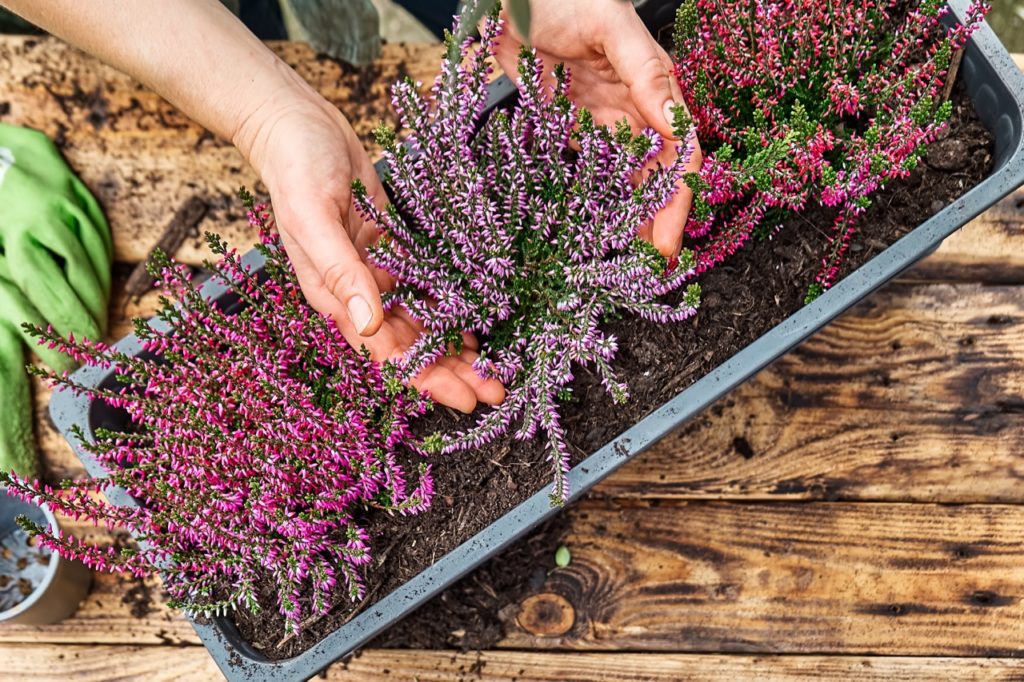
Fill with more potting mixture and tamp down gently.
Give the plant a good soaking to make sure it has enough to drink at first, allowing excess water to drain from the bottom of the pot.
While your plant is still establishing itself, you can expect to water it 1-2 times per week, making sure the soil is never allowed to fully dry out.
Preferably, you’ll use collected rainwater to keep the acidity of the soil high.
How Many Heathers Should You Plant Per Pot?
The answer to this question will depend entirely on the size of the heather specimens you have, the dimensions of your container and whether or not you wish to include other plants and flowers in the pot.

Generally speaking, they have compact root systems and will play well alongside others.
Potted Heather Care
In terms of irrigation, you’ll find that you should be watering heather less the more it becomes established.
Having said that, it’s important not to allow the soil to dry out completely.
“To get the best results, it is important when planting to keep the plants moist until they are established,” says Irene.
“Be vigilant with watering as they will not tolerate drought until very well established.”
“However, you should ensure the soil is free-draining and it’s best not to plant in heavier or clay soils unless you are able to add some materials to lighten the condition.”
Always water the roots directly, avoiding the leaves, since this can encourage the development of fungal infections.
“It can be quite tricky to balance the water requirements of heather in pots or containers,” explains Master Horticulturist Colin Skelly.
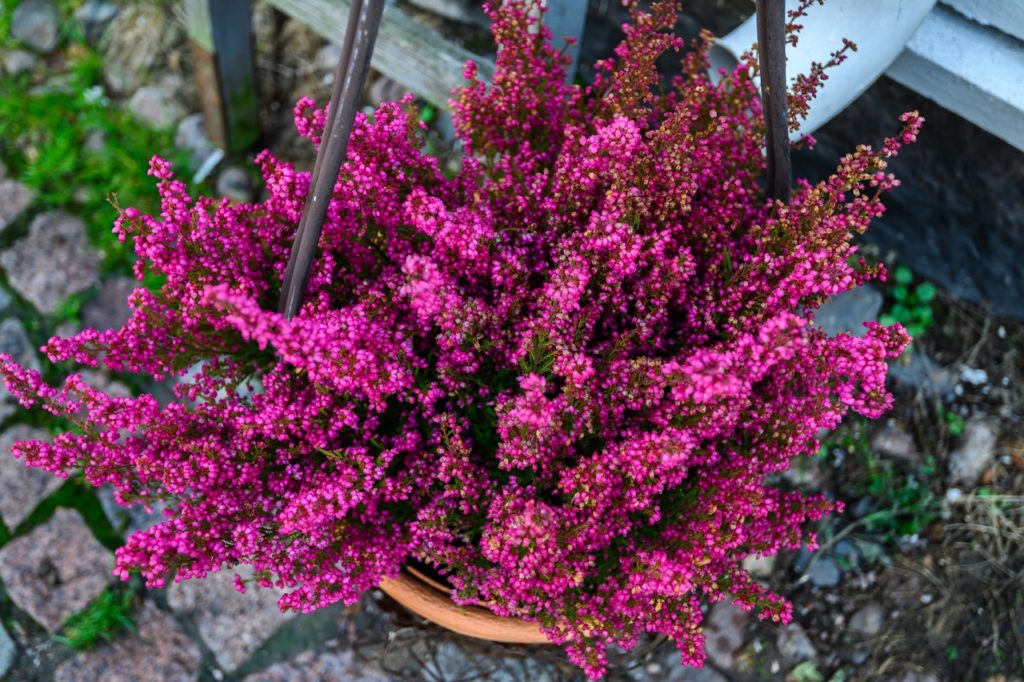
“They like free-draining soil but dislike getting very dry, which is quite a difficult combination in a potted plant.
“I once lost several mature plants due to drying out in this way, despite watering every day.
“If you can, drip irrigation in the very warmest weather would help to ensure that there is always available moisture but not too much.”
Heather doesn’t necessarily require fertilisation, though you can feed it if its appearance is lacklustre and seems as though it may have used up much of the nutrients in its container.
Choose a heather-specific fertiliser and apply it just once per growing season, as any more will be detrimental to its health in the long run.
Heather will benefit from a good trim in early spring, stripping away any leggy or drooping parts of the plant.
Not only will this give it a more sightly shape, but will also encourage fuller growth and more vigorous blooms when it comes to the flowering season in summer.
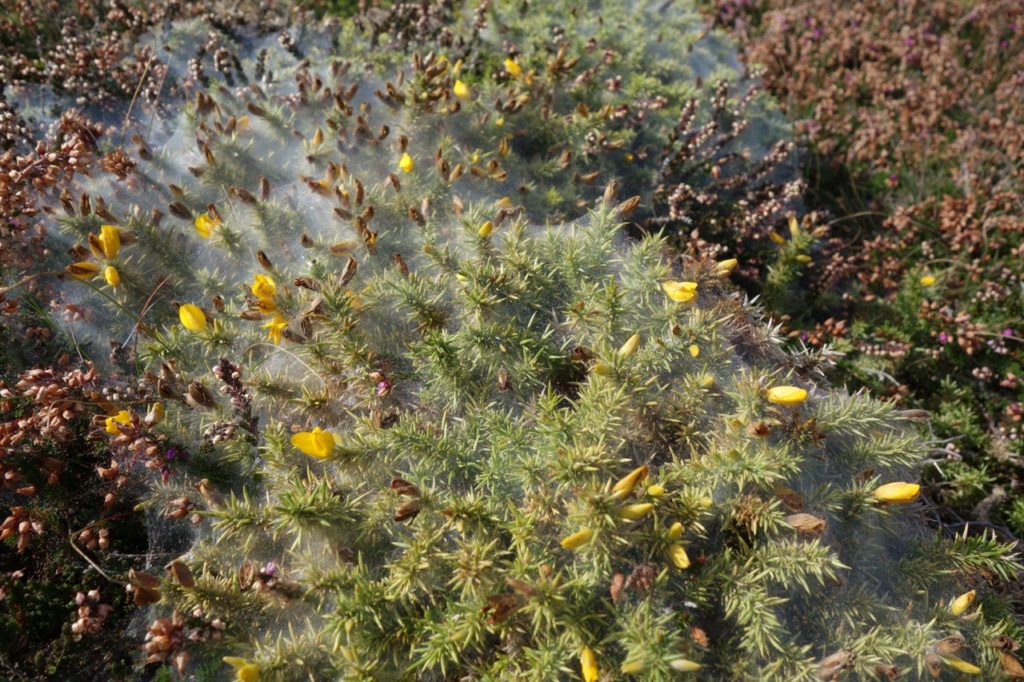
Heather does like sunshine but if it has to endure the full strength of midday heat in particularly warm locations, it can suffer root rot.
“I find they do best in open sunny sights, but partial shade will be tolerated,” explains Irene.
You should also be vigilant against pests such as spider mites and scale insects.
If you spot the signs, treat the plant immediately with an appropriate systemic insecticide.
As for overwintering, heathers are generally quite resistant to frost.
Having said that, they may succumb to the harshest temperatures in the UK.
If in doubt, move potted specimens indoors if you can.
If not, you can insulate them as much as possible by mulching the base with straw and covering the entire container (including the base) with polystyrene foam or another suitable insulating material.

